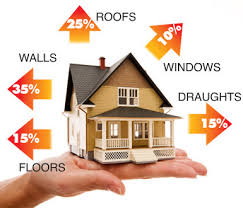Energy Performance Certificates
Domestic EPCs
Energy Performance Certificates (EPCs) for existing properties have been required since 1st August 2007 when 'Sold' and 1st October 2008 when 'Let'. During this time we have seen many companies training people, each with no prior experience, to perform these surveys and as a consequence we have been increasingly requested to re-do surveys due to poor quality of work from these companies. This will only escalate as prices are continuously reduced by these very same companies. It is important to realise that these surveys are designed to help you decide what energy efficiency measures are best for your property. We suspect that people will only take note of EPCs once the Government starts to use them as part of a taxation system (in the forms of council tax, stamp duty etc) or to make it illegal to rent properties which fall below a certain band in efficiency under the future Energy Act (in effect from 2018). This has already started in the form of Feed-in-Tariffs (FITs) for PV panels where a minimum ‘D’ rating is required before you can claim the tariff.
Reduced Standard Assessment Procedure (RdSAP) is used for calculating EPCs on existing buildings. Please make sure you do not ask for this type of survey for properties built or converted from 6 April 2008 onwards since these require full Standard Assessment Procedure (SAP) calculations which does not require a survey as they are produced from architectural drawings.
What is an EPC?
An EPC is an asset rating and tells you how energy efficient a building is and its impact on the environment. Properties are rated on a scale of A-G where an A rating is the most energy efficient. The England & Wales average for an existing dwelling is D60. Homes which are rated more highly should have lower impact through their Carbon Dioxide (CO2) emissions. The Certificate will also include recommendations on methods by which you can improve your home's energy efficiency, which can save you money and help the environment.
Which type of EPC do I need?
A domestic EPC is required for each self-contained dwelling – a dwelling for a single household with exclusive use of a private bathroom and kitchen, with a separate entrance. Newly completed dwellings require a full SAP EPC. Existing dwellings require an RdSAP EPC. Any building (or part of a building) that does not meet the definition of a 'self-contained' dwelling will require a Commercial (or non-domestic) EPC.
When do I need an EPC?
EPCs are legally required for any building that is to be put on the market for sale or for rental purposes irrespective of whether you are selling/renting privately or using an Estate Agent. It is also a requirement for any newly built properties to have an EPC upon completion of the build. It is currently the responsibility of the building owner to ensure that an EPC is available to prospective purchasers and tenants.
How long is an EPC valid for?
An EPC is valid for up to 10 years. Any new EPC supersedes an older one.
Further Information which may be useful can be found on our download page:
A guide to energy performance certificates for the construction sale and let of non-dwellings
A guide to energy performance certificates for the construction sale and let of dwellings
Improving the energy efficiency of our buildings - guide for the marketing sale and let of dwellings
Statutory instrument for the building and buildings for England and Wales
Explaination memorandum for the energy performance of buildings
Building Regulations 2013 part L1a
Building Regulations 2013 part L1b
A guide for Landlords
Thermal Bridging part L1a - practical guide (by Energy Saving Expert)
Supporting the principles of "Sustainable Development" the Rugby EAS Team has grown steadily over the last 9 years. We offer expertise in Energy, Energy Efficiency, Renewable Technologies, Low Carbon solutions and Sustainability on new construction and existing assets.
Our team advises on the practical impact of new technologies and optimum solutions for energy reduction or carbon objectives - balancing cost against operational savings and sustainability objectives.
We provide innovative solutions in a challenging economic environment, where carbon regulation continues to set challenges, offering results that make commercial sense.




